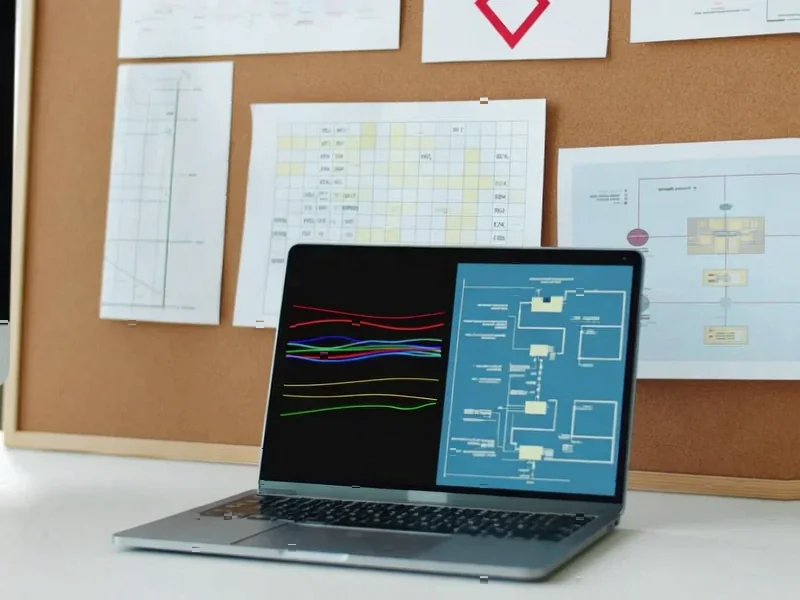According to CRN, data protection company Commvault has unveiled two major AI-focused technologies: Data Rooms for creating secure environments to connect trusted backup data to AI platforms, and a Model Context Protocol server serving as a bridge between enterprise systems and GenAI systems. Global CTO Brian Brockway explained that the initiative focuses on exposing enriched data sets for AI projects rather than just using AI internally. The Data Rooms enable enterprises to virtualize data sharing with built-in PII sanitization and data masking capabilities, while the MCP integration allows natural language interaction with Commvault Cloud using systems like ChatGPT or Claude. These announcements come ahead of next week’s Commvault Shift conference where the company plans to showcase how these technologies integrate into broader solutions.
The Strategic Pivot From Protection to Monetization
Commvault’s move represents a fundamental business model evolution from selling data protection as insurance to positioning backup infrastructure as a revenue-generating asset. For decades, companies have treated data protection as a cost center – necessary infrastructure with negative ROI. By enabling AI-ready data access, Commvault transforms their platform from a defensive expense into an offensive capability that can drive AI initiatives and business intelligence. This creates multiple revenue streams: they can charge premium pricing for AI-enabled features, expand their addressable market beyond IT departments to data science teams, and potentially introduce consumption-based pricing for data access services.
Why This Move Is Perfectly Timed
The timing is strategically brilliant because enterprises are hitting a critical wall in their AI adoption journeys. Most companies have exhausted the low-hanging fruit of using public AI models with generic data and now need to leverage their proprietary data for competitive advantage. However, accessing this data presents massive challenges: security concerns, data quality issues, and the sheer complexity of extracting value from backup repositories. Commvault is positioning itself as the bridge between the AI hype cycle and practical implementation. Their adoption of the open-source Model Context Protocol standard shows they understand that interoperability, not proprietary lock-in, will win this market.
Redefining the Competitive Battlefield
This announcement fundamentally changes Commvault’s competitive positioning against both traditional backup vendors and emerging AI data platforms. While competitors like Veeam and Rubrik focus on cyber resilience and ransomware protection, Commvault is creating a new category: AI data enablement from backup infrastructure. More importantly, they’re competing with specialized AI data platforms like Databricks and Snowflake by leveraging their unique advantage – they already have the data. Most enterprises’ most comprehensive data sets reside in backup systems, giving Commvault immediate access to what other platforms struggle to acquire.
The Multi-Billion Dollar Opportunity
The financial implications are staggering. Consider that the global data protection market is worth approximately $15-20 billion annually, while the AI data management and infrastructure market is projected to exceed $100 billion by 2025. By bridging these markets, Commvault could capture significant premium pricing – potentially 30-50% higher than traditional backup solutions. More importantly, they’re creating stickiness that makes switching costs prohibitive. Once enterprises build AI workflows dependent on Commvault’s data access layer, they become embedded in core business operations rather than just IT infrastructure.
The Execution Challenges Ahead
Despite the promising strategy, significant execution challenges remain. The biggest hurdle will be data quality – backup data isn’t inherently AI-ready. It often contains duplicates, inconsistencies, and legacy formats that require substantial preprocessing. Commvault will need to develop sophisticated data curation capabilities beyond basic masking and sanitization. Additionally, they’ll face organizational resistance as data governance traditionally falls outside IT backup teams’ responsibilities. Success will require convincing security, compliance, and business unit leaders that their platform can handle the complex data governance requirements of AI initiatives.
Broader Industry Implications
Commvault’s move signals a broader industry trend where infrastructure vendors are racing to add AI capabilities to existing platforms. We’re likely to see similar announcements from storage vendors, database companies, and cloud providers as everyone recognizes that the real AI battle will be fought over data access, not just model development. This could lead to consolidation as AI startups without comprehensive data access strategies become acquisition targets for infrastructure companies seeking to quickly build these capabilities. The companies that control the data pipelines will ultimately control the AI value chain.




